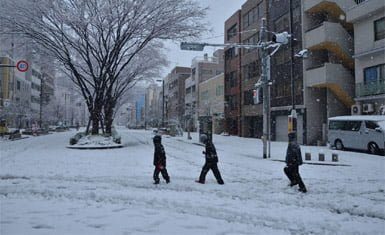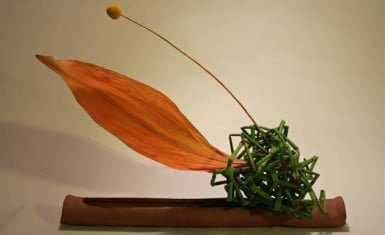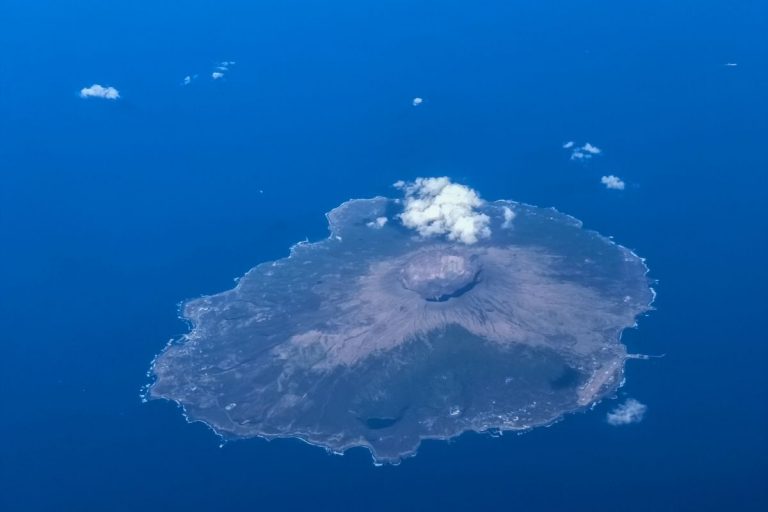Mount Koya or Koyasan (高 野山) is located in Wakayama Prefecture and is the arrival point of the Pilgrimage Route of Shikoku. It is the largest monastic city in Japan of the Shingon branch of the buddhism.
History of Mount Koya
Mount Koya is situated 900m above sea level and is surrounded by 8 hills. It was an undeveloped area before the monk Kukai (空 海) founded his monastery in 832.
Why did the monk Kukai choose this place? There were several reasons for choosing this place.
① The Buddha revered by the Shingon school is the Cosmic Buddha (大 日 如 来, Dainichi Nyorai) sitting on an 8-petalled lotus flower. As Koya san is surrounded by 8 hills, he saw this place as the center of a lotus flower, that is, the place where the Cosmic Buddha is sitting.
② At the end of his study trip to China, before leaving the country, Kukai launched the Sankosho (三 鈷 杵), the material used for the Shingon school prayer, and it flew in the direction of Japan. When he arrived in Japan, he saw a bright place and was guided by 2 dogs (considered to be Shinto deities turned into dogs) and managed to find the Sankosho, which was hanging on a pine tree that still exists today in Danjo Garan.
In 816, Kukai obtained permission from the Emperor of Saga to create a monastery on this mountain. In 832, Kukai inaugurated the first monastery, Kongobuji, to preach the Shingon doctrine. Thanks to the help of the emperor, who promoted the expansion of the Shingon doctrine, it spread rapidly.
At the height of Koyasan’s prosperity in the early 16th century, there were about 1,500 monasteries and 90,000 monks. When Meiji was restored in 1868, some parts of Koyasan were confiscated by the Meiji government and there were also many fires so many temples were lost. Only 117 temples remain today. Of these 117 temples, 52 are monastery inns. We can spend the night in one of the monasteries of Mount Koya. The monk Kukai (空 海) or Kobo Daishi (弘法 大師)
Kukai was born in 774 on the island of Shikoku, his boy’s name was Mao (真 魚). His parents attached great importance to the belief of Buddhism. Mao was a very intelligent child and at the age of 15, he went to the capital, Kyoto, with his uncle who was a scientist. He devoted himself mainly to the study of ancient Chinese texts and Confucianism. His desire to help suffering people grew ever greater and at the age of 19 (in 793) he decided to become a monk, and at the age of 22, he received the mon of Kukai at the Todaiji temple.
He studied various Buddhist texts from different schools and became interested in the Maha Vairochana Sutra, in Japanese Dainichi Kyo, and devoted himself to its precept. Unfortunately, some parts of the texts were written in ancient India and were incomprehensible to him, so Kukai decided to go to China to deepen his knowledge of Dainichi Kyo. It left Japan on July 6, 804 and arrived in China on August 10. For 8 months, he learned esoteric Buddhism from the great monk Keika Ajari. Two years later, in 806, he returned to Japan and spread this new school; and in 8012 he founded the Shingon school, the esoteric Mahayana Buddhism. It is an esoteric Buddhism according to which, with the help of a teacher, it is possible in the course of life to achieve the state of Buddha, that is, the absolute truth.
In 832, he opened the first Shingon School monastery, Kongobuji, on Mount Koya.
Kukai was not only an intelligent monk, he also dedicated his life to helping people. He participated in public works, created a university for everyone, and also wrote many works.
Kukai passed away (entered eternal samadhi on Mount Koya) in 835 at the age of 62 and in 891 he was posthumously named Kobo Daishi (弘法 大師, literally Grand Master of the diffusion of loi).
It is said that Kobo Daishi did not die but entered a state of prayer and that from Mount Koya he prays every day for Peace.
The Shukubo (宿 坊): inn monastery
We still have 117 temples on Mount Koya and among these 117, 52 temples are monastery lodges where worshipers and tourists can spend the night. Of course, it is not a hotel, so the services are limited, but most of the temples offer us beautiful Japanese rooms. In most monasteries, the bathrooms and toilets are communal.
As Mount Koya is quite far from the main cities, if you want to enjoy the site, we advise you to spend at least one night in one of the monasteries. You can also enjoy Mount Koya gastronomy, Shojin Ryori, vegetarian cuisine.
Gastronomy of Mount Koya: Shojin Ryori (精進 料理)
Shojin Ryori vegetarian cuisine was introduced to Japan in the 12th century. For Buddhism, there is the precept of respect for animal life, so monks (in general) do not eat fish or animal meat. To replace animal protein, they eat a lot of tofu cooked in many different ways.
Koya-Dofu (高 野 豆腐, literally Mount Koya) tofu is a type of tofu invented this place: it is canned dry tofu made by freezing and maturing at a low temperature. Since Mount Koya is far from everywhere and the monks don’t eat animal protein, plant protein was important. That is why the monks of Mount Koya invented the Koya-Dofu.
What places not to miss on Mount Koya
There are 3 main sites on Mount Koya: the Okuno-in (the necropolis), the Danjo Garan, and the Kongo Buji.
Access to approx. 2.5 hours by local train, funicular and bus from Osaka.



